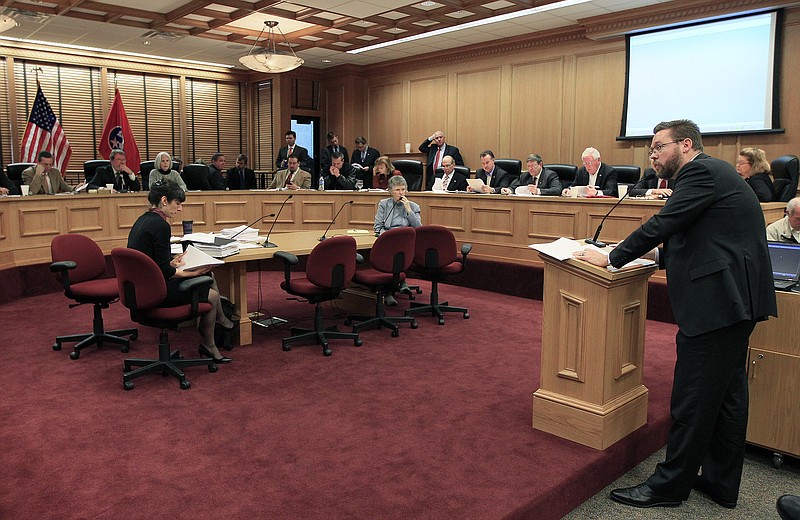Much rhetoric was spent during the 2018 election and in previous years of this decade decrying the gerrymandering states did to shape congressional and state legislative districts to provide partisan advantage.
Since Republicans held a majority of seats in the United States House and a majority of governorships after the 2010 election, following which districts would be drawn based on the 2010 Census, most of the whining and hand-wringing the past eight years has come from Democrats.
For most of the 20th century, it came from Republicans, who had no help as Democrats do now from a partisan national media in making their case.
The problem is fairness, and it's a much more complex problem than you might think.
But, in many cases, it's also a game of political chicken. Nobody wants to be the first to give up their advantage.
The United States Supreme Court has been of little help, either, refusing to absolutely strike down the process that creates such districts. Until it does, or until states are willing to undertake a uniform process that reforms redistricting, we are likely to see 50 redistricting plans continue in 50 states.
Welcome to the next three years, where record amounts of money will be pouring in to legislative races in states that have the potential to flip control of their legislature ahead of the 2020 Census and subsequent redistricting.
Former President Barack Obama, under whose leadership the Democrats lost 13 governorships, 816 state legislative seats, 12 U.S. Senate seats and 64 U.S. House seats, has an idea. He recommends electing more Democrats and creating appointed commissions to handle redistricting. In time, he theorizes, each party should have representation roughly approximating its share of the biennial congressional popular vote.
Republican dominance, he said, is "not good for our children and regardless of our party affiliations, it's not good for our democracy." Not surprisingly, he didn't add a caveat about Democratic dominance for most of the 1900s not being good for our democracy.
With Democrats winning 53 percent of the popular vote in last month's midterm elections, as Karl Rove points out on Fox News, the former president's "fair share" theory would give them 231 U.S. House members and Republicans 204. Right now, Democrats have 233 seats, with three races still to be decided. So with all of that supposed Republican gerrymandering, Democrats have exceeded their "fair share."
But in two states where "independent" commissions drew congressional boundaries, and using Obama's "fair share" theory, Democrats would have 35 congressional seats in California to the Republicans' 18, and Democrats would have two congressional seats in Iowa to the Republicans' two. But the reality is Democrats will have at least 45 seats in California and three of the four in Iowa.
Ten states, independent of the former president's opinion, have established, or voted to establish, such commissions. We predict the more states do it, the more lawsuits we will see, suggesting the lack of independence on such independent commissions.
So, back to the drawing board.
Many voters ask, quite correctly, how can redistricting ultimately be fair if districts are drawn by any body controlled by a single party. For that matter, if redistricting plans are put into the hands of supposedly independent groups, how can the public be assured they are truly independent?
For instance, a governmental body might suggest putting the task in the hands of college professors trained in sociology, demography or mapmaking.
But numerous studies have found college professors to be overwhelmingly Democrats. One 2018 study of 51 of the 66 highest-ranked liberal arts colleges in the U.S., for example, found that in all 51 professors who claimed to be Democrats outnumbered ones who claimed to be Republican, and that also was true in every field of study. The average ratio was 17-1, and it rose to as high as 120-1. To suggest the plans from such a committee would not be biased is naive.
Others have given the job to groups divided among Democrats, Republicans and so-called independents. But independents may be so in name only but vote a straight ticket on Election Day. How would a governmental body certify that an independent redistricting official is truly independent?
For now, Republicans control the redistricting process in nearly twice the number of states as Democrats, the GOP in complete control in 17 states and Democrats in 10. However, conceivably, Republican-controlled legislatures also will draw lines in four states where a Democrat is governor, and a Democratic legislature will draw the boundaries in one state where a Republican is governor.
But four states hold legislative elections in 2019, most do so again in 2020, and two will do so before the redistricting process begins in 2021.
With 50 sets of criteria in 50 states, the redistricting process is one we wish the Supreme Court would settle once and for all. But previous courts, those controlled by appointees from presidents on both sides of the aisle, have steadfastly been hesitant to do so. Until then, we'll have gerrymandered districts, faux charges of racism, lots of money thrown around and court battles. Just what we need more of.
